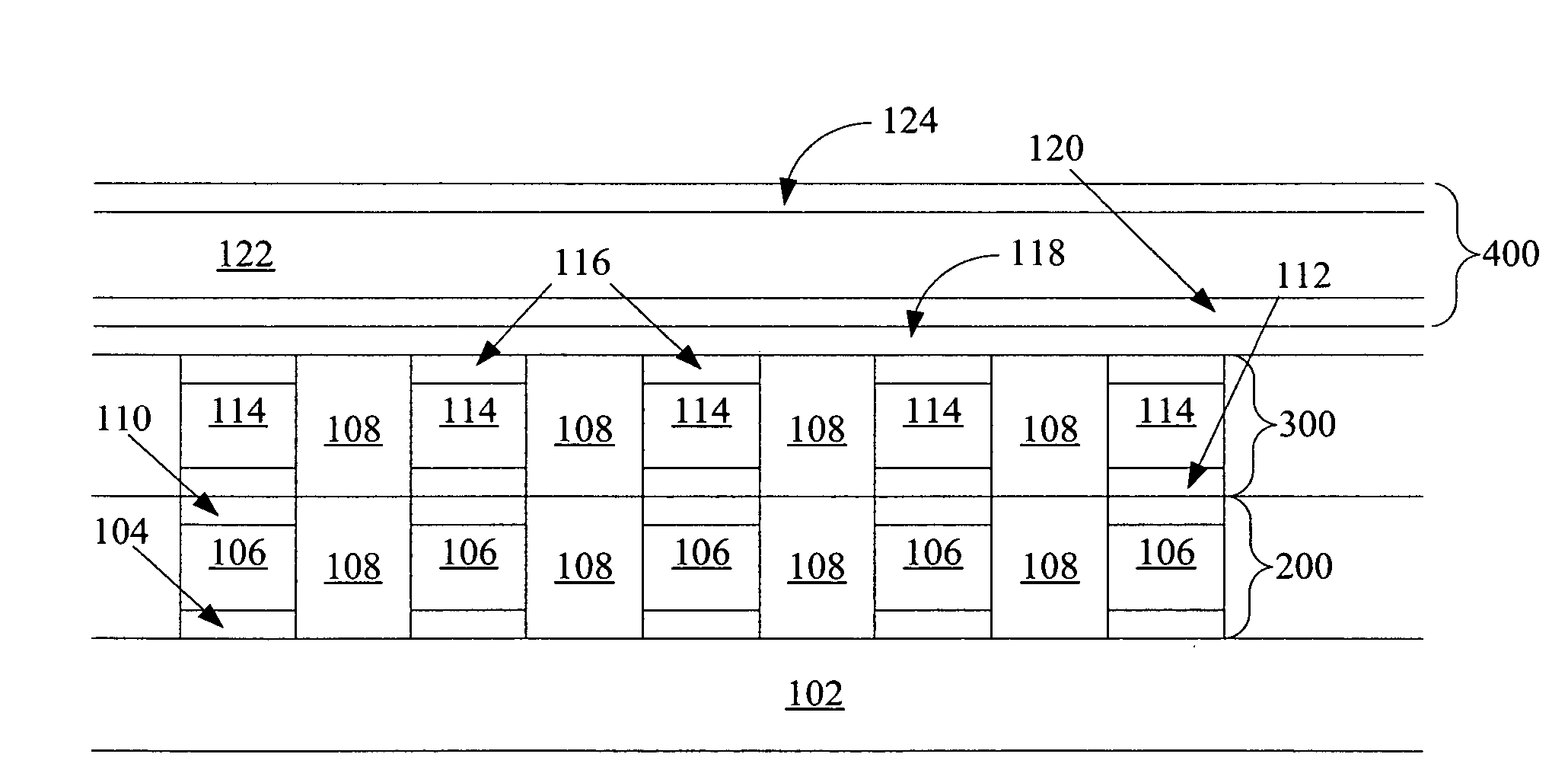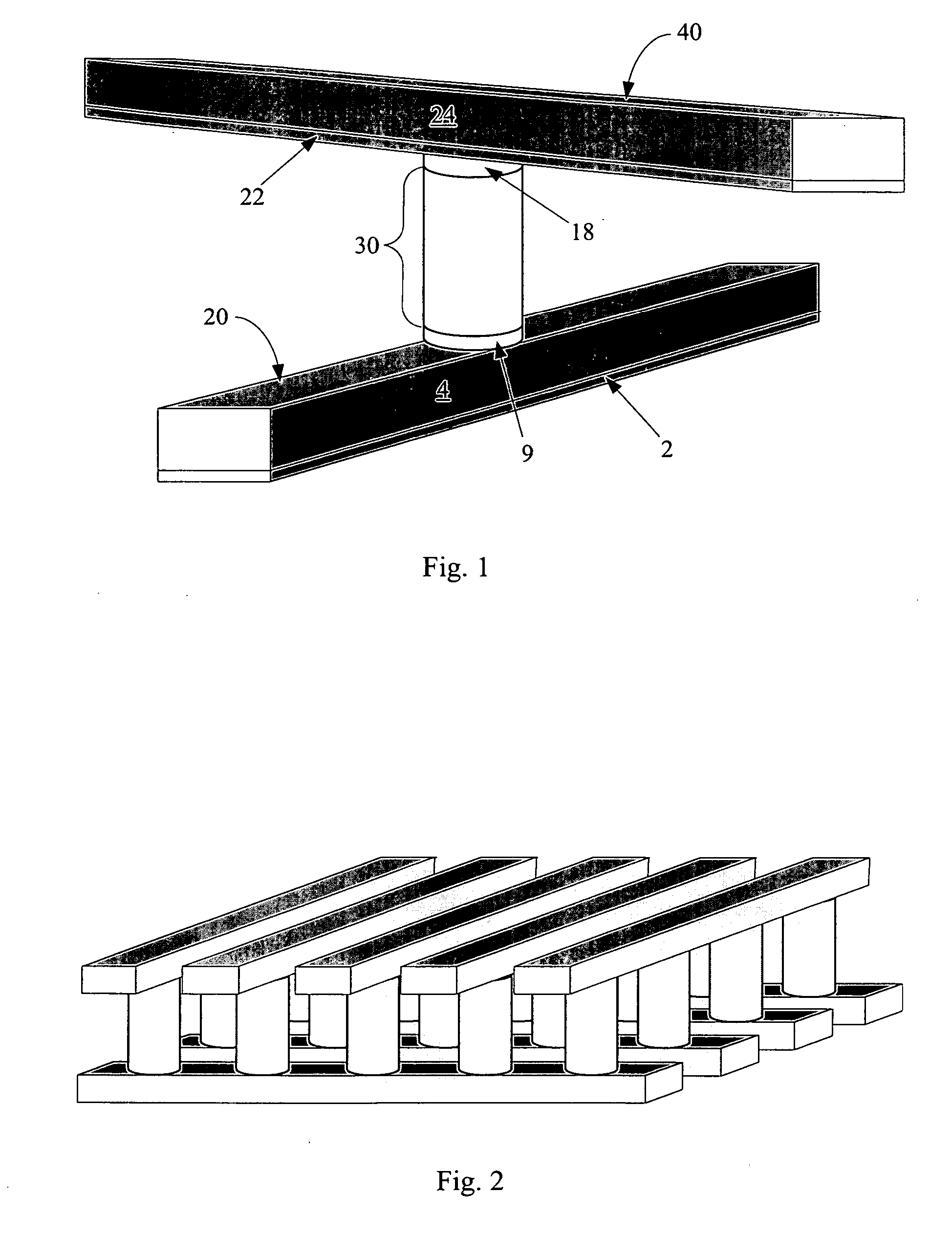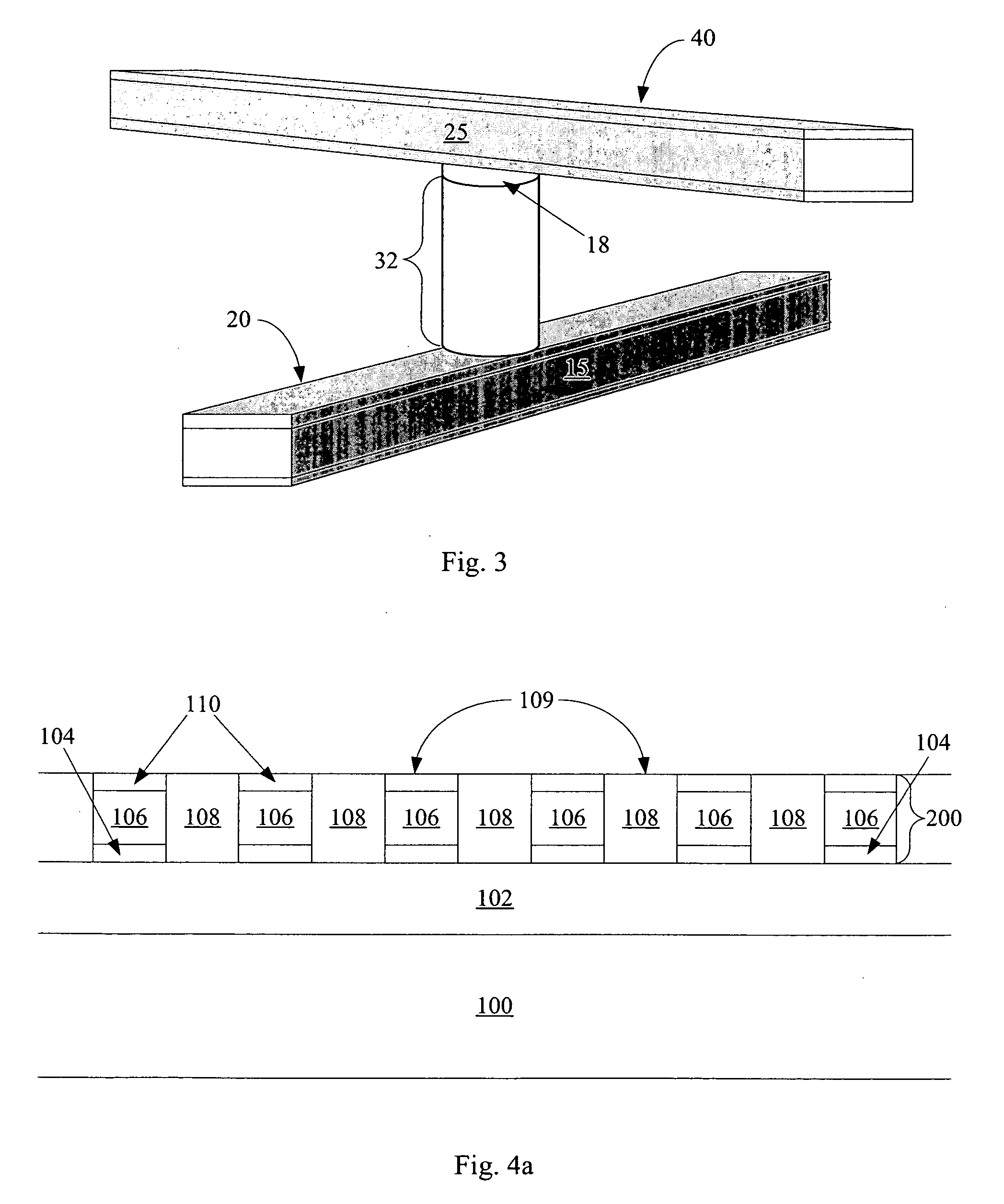High-density nonvolatile memory array fabricated at low temperature comprising semiconductor diodes
a memory array and low temperature technology, applied in the direction of diodes, semiconductor devices, semiconductor/solid-state device details, etc., can solve the problems of copper having even lower thermal tolerance and wires tend to soften
- Summary
- Abstract
- Description
- Claims
- Application Information
AI Technical Summary
Benefits of technology
Problems solved by technology
Method used
Image
Examples
example
Copper Conductors
[0067] Turning to FIG. 5a, in this embodiment, fabrication begins as before over substrate 100 and insulating layer 102, which may be as described in the previous embodiment.
[0068] In preferred embodiments a think layer 201 of, for example, silicon nitride is deposited on insulating layer 102. This layer will serve as an etch stop during the damascene etch to come.
[0069] Next a thick layer 202 of a dielectric, for example TEOS, is deposited. Its thickness may be between about 1000 and about 6000 angstroms, preferably about 4000 angstroms. A conventional damascene etch is performed to etch substantially parallel trenches 204. The etch stops on silicon nitride layer 201. A barrier layer 206 of, for example, tantalum nitride, tantalum, tungsten, tungsten nitride, titanium nitride, or any other appropriate material is conformally deposited covering dielectric layer 202 and lining trenches 204.
[0070] As shown in FIG. 5b, next copper layer 208 is deposited on barrier ...
PUM
 Login to View More
Login to View More Abstract
Description
Claims
Application Information
 Login to View More
Login to View More - R&D Engineer
- R&D Manager
- IP Professional
- Industry Leading Data Capabilities
- Powerful AI technology
- Patent DNA Extraction
Browse by: Latest US Patents, China's latest patents, Technical Efficacy Thesaurus, Application Domain, Technology Topic, Popular Technical Reports.
© 2024 PatSnap. All rights reserved.Legal|Privacy policy|Modern Slavery Act Transparency Statement|Sitemap|About US| Contact US: help@patsnap.com










